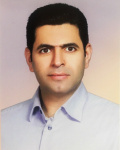| نویسندگان | Dieu Tien Bui, Ataollah Shirzadi, Himan Shahabi, Kamran Chapi, Ebrahim Omidavr, Binh Thai Pham, Dawood Talebpour Asl |
|---|---|
| نشریه | Sensors |
| ارائه به نام دانشگاه | University of Kashan |
| شماره صفحات | 1-34 |
| شماره مجلد | 19 |
| ضریب تاثیر (IF) | 2.475 |
| نوع مقاله | Original Research |
| تاریخ انتشار | 29-05-2019 |
| رتبه نشریه | ISI |
| نوع نشریه | الکترونیکی |
| کشور محل چاپ | سوئیس |
چکیده مقاله
In this study, we introduced a novel hybrid artificial intelligence approach of rotation forest (RF) as a Meta/ensemble classifier based on alternating decision tree (ADTree) as a base classifier called RF-ADTree in order to spatially predict gully erosion at Klocheh watershed of Kurdistan province, Iran. A total of 915 gully erosion locations along with 22 gully conditioning factors were used to construct a database. Some soft computing benchmark models (SCBM) including the ADTree, the Support Vector Machine by two kernel functions such as Polynomial and Radial Base Function (SVM-Polynomial and SVM-RBF), the Logistic Regression (LR), and the Naïve Bayes Multinomial Updatable (NBMU) models were used for comparison of the designed model. Results indicated that 19 conditioning factors were effective among which distance to river, geomorphology, land use, hydrological group, lithology and slope angle were the most remarkable factors for gully modeling process. Additionally, results of modeling concluded the RF-ADTree ensemble model could significantly improve (area under the curve (AUC) = 0.906) the prediction accuracy of the ADTree model (AUC = 0.882). The new proposed model had also the highest performance (AUC = 0.913) in comparison to the SVM-Polynomial model (AUC = 0.879), the SVM-RBF model (AUC = 0.867), the LR model (AUC = 0.75), the ADTree model (AUC = 0.861) and the NBMU model (AUC = 0.811).
متن کامل مقاله
لینک دانلود فایل
